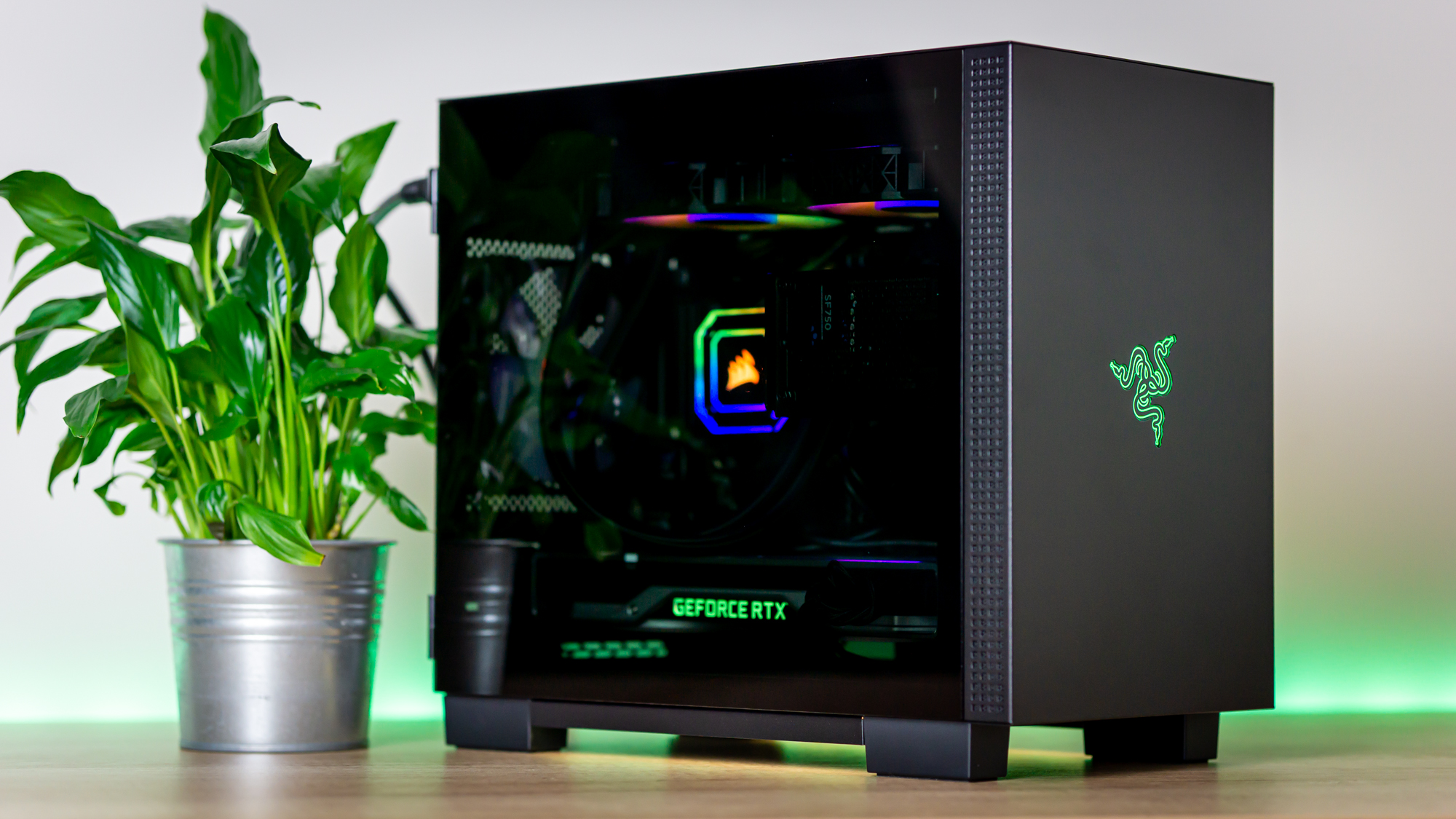When Razer reached out asking if I wanted to review the Tomahawk ITX, I of course said yes. After all, it’s the first time Razer is delving into the ITX chassis market. And I have to admit, it’s a good looking case with a simple but purposeful desing.
Razer wouldn’t disclose who its production partner was, but the chassis closely resembles that of the Lian Li TU150, albeit with a few changes. Given the collaboration history between the two companies, a collaboration with Lian Li wouldn’t be surprising.
Whether this compact Razer case deserves a spot on our Best PC Cases list remains to be seen.Let’s dig into the Razer Tomahawk ITX’s design and performance to find out.
Razer Tomahawk Specifications
| Type | ITX Tower |
| Motherboard Support | Mini-ITX |
| Dimensions (HxWxD) | 8.46 x 9.72 x 14.49 inches (215 x 247 x 368 mm) |
| Max GPU Length | 12.6 inches (320 mm) |
| CPU Cooler Height | 6.5 inches (165 mm) |
| Max PSU Length | SFF, SFF-L |
| External Bays | None |
| Internal Bays | 3x 3.5-inch |
| Expansion Slots | 3x |
| Front I/O | 2x USB 3.0 |
| 1x USB Type-C | |
| Mic, Headphone | |
| Other | Chroma RGB Controller |
| Front Fans | None (Up to 1x 120mm) |
| Rear Fans | None (Up to 1x 120mm) |
| Top Fans | None (Up to 2x 120mm) |
| Bottom Fans | None (Up to 2x 120mm) |
| Side Fans | x |
| RGB | Yes, Razer Chroma Underglow |
| Damping | No |
| Warranty | 1 Year |
Features
Image 1 of 4
Image 2 of 4
Image 3 of 4
Image 4 of 4
Touring around the chassis, there’s not much to mention of any significance – the Tomahawk ITX is shaped like a shoebox on its side, with dark tinted tempered glass panels on each side and a closed front. There is some semblance of intake mesh on the side of the front panel, but the perforation is tiny and likely won’t do much for cooling.
At the bottom of the case you’ll spot two Chroma RGB strips between the front and back feet. These provide Chroma underglow lighting, which we’ll demonstrate later in the review. With diffusers, they should handsomely light up the area underneath the chassis.
Image 1 of 2
Image 2 of 2
The case’s side panels swing open on hinges, making it really easy to open and show off your system without the hassle of unscrewing and removing a panel. That said, there’s not a lot of space for cable management behind the motherboard tray, and without anything to hold the cables in place, it might become a challenge to keep the panel closed later on, as it’s only held shut by a magnet.
Top IO comprises a USB Type-C port, discrete microphone and headphone jacks and two USB 3.0 ports. Power and reset switches are naturally also present.
Internal Layout
Image 1 of 2
Image 2 of 2
After removing the glass panels, because I don’t want them swinging around during the build process, we reveal the interior of the case. There is space for up to Mini-ITX motherboards, an SFX power supply near the front, and large 3-slot graphics cards.
Image 1 of 1
Cooling
Despite being a $189 chassis, Razer does not include any fans with this case. You can install up to a 240mm AIO at the top of the case, two 120mm fans at the bottom, along with single 120mm spinners at the front intake and rear exhaust.
CPU coolers can be up to 6.5 inches (165 mm) tall, and GPUs up to three slots thick and 12.6 inches (320 mm) long.
However, air filtration is bound to be problematic in this case. There is a front intake filter, but the mesh design is so restrictive here that I doubt the case will pull much air through this filter. As a result, this can only turn into a negative-pressure case that draws unfiltered air in from the bottom and rear of the chassis.
Storage
An SSD mount is present on the side tray and the bottom also supports another two. There are no 3.5-inch HDD mounts.
Does it fit an RTX 3080?
Yes, the case fits triple-slot GPUs up to 320mm (12.6 inches) long.
